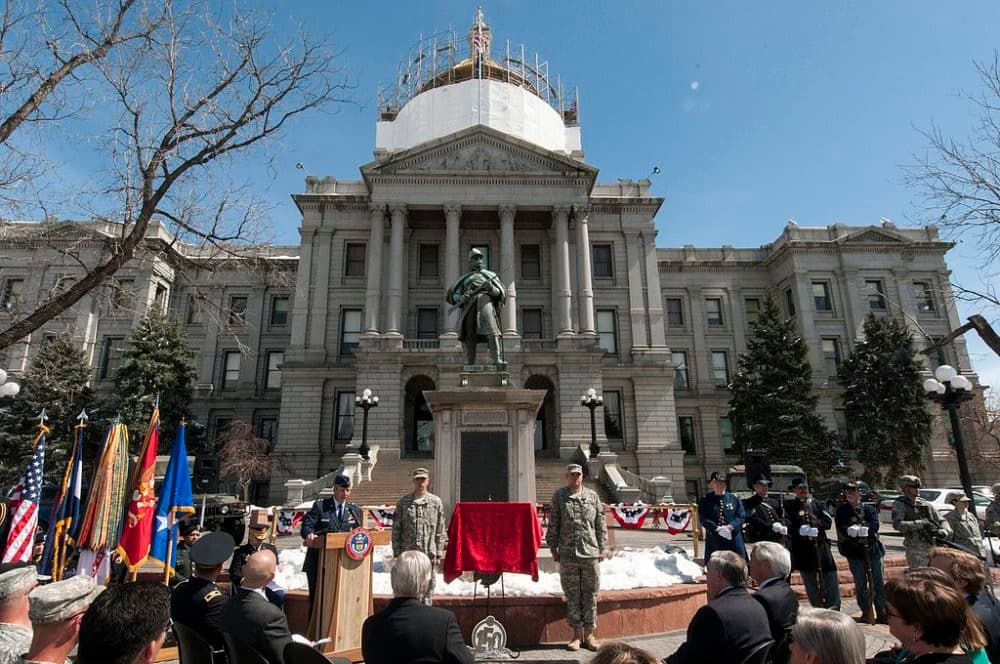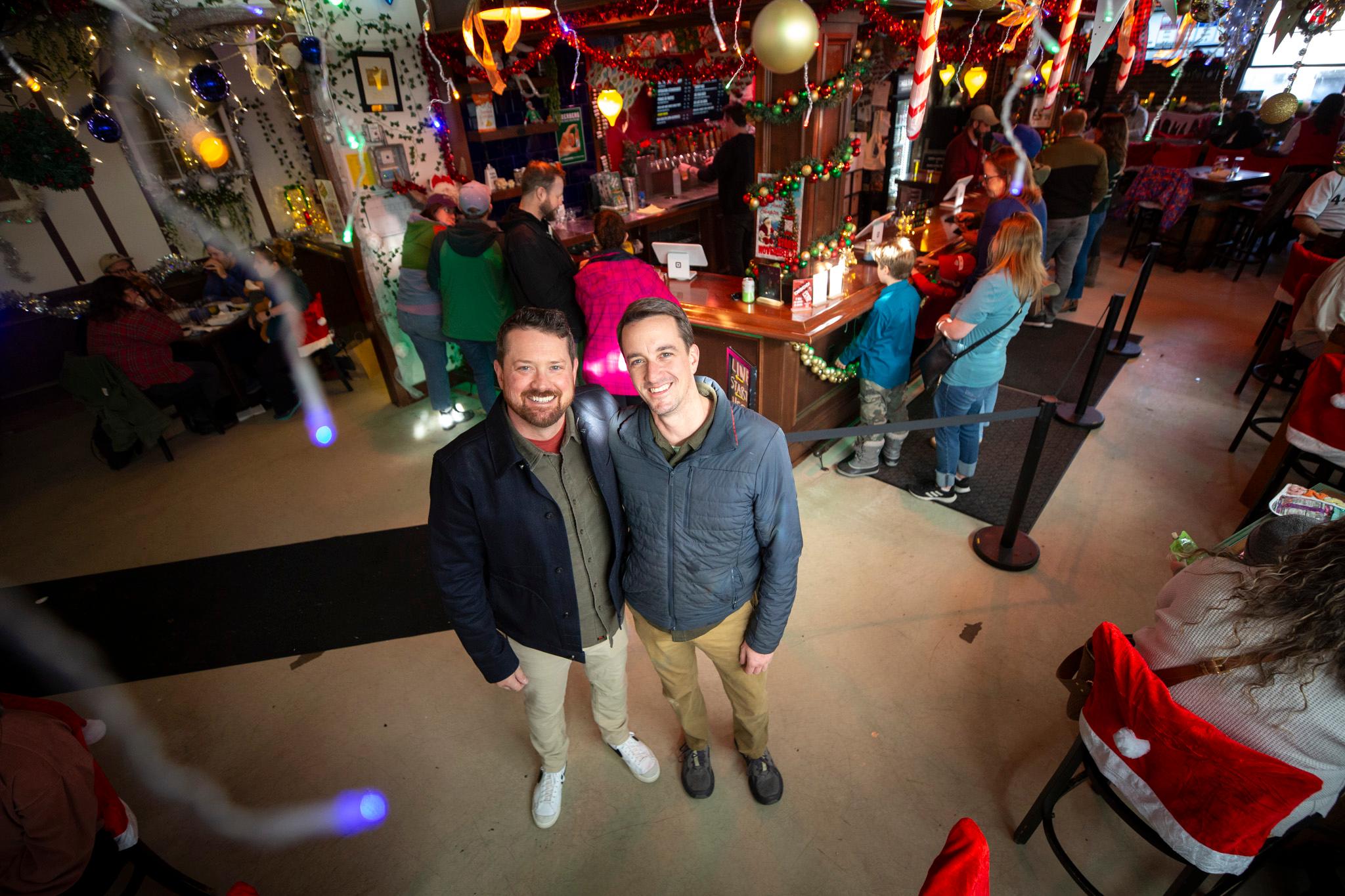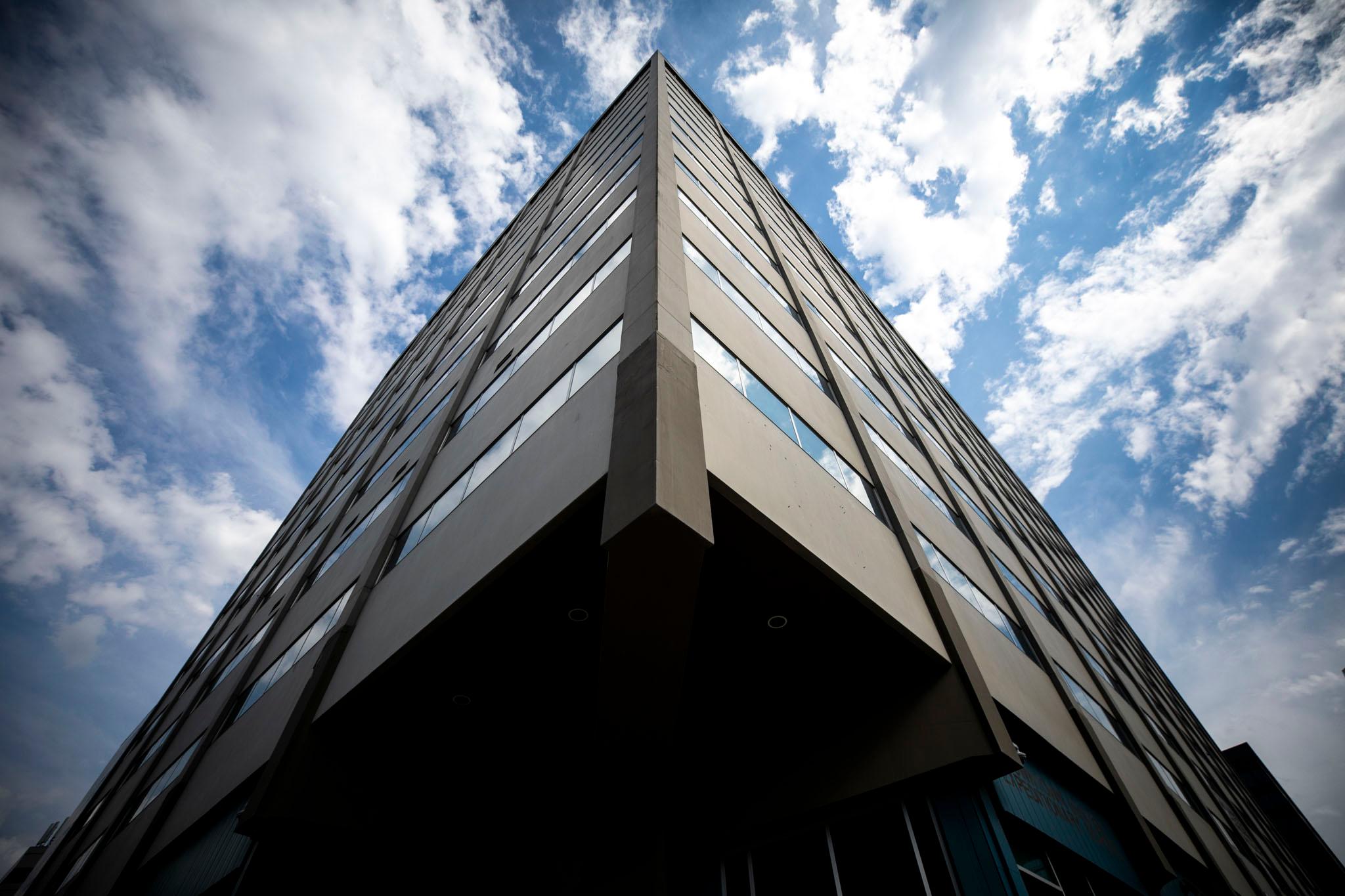
Activists in Durham, North Carolina tore down a statue of a Confederate soldier in the city's downtown on Monday night, instantly heating up a national debate about what should be done with monuments to the secessionist, slave-owning South.
Colorado wasn't yet a state during the Civil War and had been established as a territory only weeks before the fighting began. The region was thousands of miles from much of the most intense fighting, but that period's legacy lives on in several ways here -- from small Confederate memorials in cemeteries to memories of a Union massacre of indigenous people.
At the time of the war, Denver itself was thought to be about equally divided between Northern and Southern supporters, and there were "very uncommon" reports of people being kept in slavery in the area, according to one history.
Aside from minor skirmishes, the most notable conflict in the West was the Battle of Glorieta Pass, when Union-supporting volunteers stopped Confederate rebels from entering the Rocky Mountains near Santa Fe, New Mexico.
There are relatively few Confederate monuments to argue about in Colorado, but they do exist.
The Colorado chapter of Sons of the Confederate Veterans' website counts only two markers in Colorado that specifically honor the Confederate cause. One erected in 1899 stands in a Canon City cemetery, while another from 2003 stands in Riverside Cemetery off Brighton Boulevard between I-70 and I-270. United Daughters of the Confederacy recently was standing vigil over the marker.
Both of these memorials look more like grave markers for the dead than the kind of life-sized icons that have attracted controversy in other areas.
In terms of organizations, there are re-enactors who follow the "Confederate Partisan Rangers," who were a kind of guerrilla group. A Confederate flag featured prominently in a recent parade through the town of Bayfield.
There also is the Colorado Division of the Sons of Confederate Veterans, which describes itself as a "strictly patriotic, historical, educational, fraternal, benevolent, non-political, non-racial and non-sectarian organization."
The group condemned the recent white-supremacist rally in Charlottesville, writing that it has "no tolerance for people like this" -- but the group's post also illustrated some of the rising tensions over Confederate monuments.
"All of this could have been avoided had the Charlottesville government allowed the monuments to remain unmolested," it read, referring to the debate over Charlotte's proposed removal of a statue of General Robert E. Lee, which was a stated cause for the racist rally. The group did not respond to a request for comment.
Meanwhile, Colorado still has other history to debate.
For one thing, there's the bronze of a Union soldier outside the state capitol building in Denver. Its plaque once celebrated white soldiers' victory at the "Battle of Sand Creek," The New Republic reported in 2014.
In fact, Sand Creek was a massacre. Union soldiers in 1864 killed more than 150 people from the Cheyenne and Arapaho nations, despite their attempted surrender. The troops burned the village and mutilated the dead, Smithsonian Magazine reported.
The statue at the Capitol now has a new plaque that acknowledges the brutality. "That created a glaring contradiction between the plaque’s message and the heroic image of virtuous soldier," as John Judis argued in his piece in The New Republic.
The slaughter has since been commemorated at the Sand Creek Massacre National Historic Site, and the state legislature also has authorized a new memorial to the massacre on the Capitol grounds.
But, as Diane Carman argued in a recent editorial for The Denver Post, the state still honors people who were linked to the massacre. The author called for the removal of John Evans' name from Mount Evans, among others.
Evans was the second territorial governor, and the attack happened on his watch. A Northwestern study by a committee of scholars found no evidence that Evans had knowledge of the attack in advance, but did find that he failed in "his responsibility as superintendent of Indian Affairs," and that he refused to acknowledge or criticize what had happened.
There's also the Stapleton question.
Five-term Denver mayor Benjamin Stapleton was a member of the Ku Klux Klan who put Klan members in office around the city. The KKK had a huge presence in Denver by the mid-1920s, part of a reemergence for the group that came alongside Southern states' implementation of the Jim Crow campaign to take away the civil rights granted to black people after the Civil War. (Read the story of a secret society that infiltrated Denver's Klan here.)
The Stapleton airport was named after the former mayor, and thus so was the new neighborhood that stands there today. As Paul Karolyi described it in a recent episode of Changing Denver, Black Lives Matter 5280 has called for the community's name to be changed, successfully starting a community-wide conversation in recent years.
Most recently, Councilman Chris Herndon said that he doesn't associate the neighborhood with the former mayor, but would help explore a name change if the community asked, as 9News reported.
Is there a piece of Colorado that you want, or fear, to see renamed or removed? Email me.
Correction: Evans was the second, not the first, territorial governor. William Gilpin was first.












